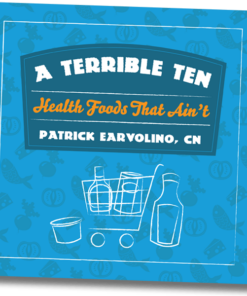By Dr. Royal Lee

The Vitamin P Group of the C Complex[spacer height=”20px”]
The promotion of rutin from buckwheat is another revival of an old household remedy.
Millspaugh’s American Medicinal Plants (1887) states that the only uses on record of the buckwheat plant are that an infusion of the leaf is useful as a remedy for erysipelas, and that the flour of the seed, made into a paste with sour milk, is useful as a poultice to the mammary glands to increase the secretion of milk.
It is not too much of a coincidence, then, to find that today the juice of the plant is found to be a valuable source of the vitamin C component that is important in stopping capillary hemorrhages, and that the buckwheat meal is now known to be a source of a fraction (as is rice and barley) that is very useful in increasing tissue permeability and thereby lowering blood pressure.
When we look into the erysipelas background, we find it is not a disease with a definite cause, but “the most common excitant is Streptococcus pyogenes. It is usually accompanied by constitutional disturbances, the most marked of which is fever…aside from the local lesions, there may be a toxemia marked by petechiae in the serous membranes, swelling of the spleen, focal necroses, and albuminous degeneration in the kidneys and liver.”1
Sajous, in his Analytical Cyclopedia of Practical Medicine, says also, “From its etiology, therefore, erysipelas is a non-specific disease.” That, of course, means to us that the cause is not any one type of germ. The real cause, then, may be deficiency, just as the cause of capillary breakdown in scurvy is deficiency. Here, we have the added complication of infection, the infective agent being incidental, not the basic cause, just as it is in tuberculosis. Both can only occur in a subject who has lowered resistance due to malnutrition.
Erysipelas should be called “fulminating scurvy” as distinguished from the better known slower form of the disease. Various infective agents can convert a case of subclinical scurvy where the symptoms may be relatively inconspicuous into this type. The commonest, of course, is Streptococcus pyogenes. Bacteriologists and followers of Pasteur believe that the microorganism is the only cause. Bechamp, the French professor whose researches Pasteur appropriated without credit as his own,2 had other ideas. He believed that diseased cells gave off “microzyma,” fragments as it were of chromosomes that recombined in other forms and, in effect, became disease “germs.” (These fragments are now known as “chromidia.”) This he said, accounted for the species specificity of most infectious disease.
Florence Nightingale said, “The specific disease doctrine is the grand refuge of weak, uncultured, unstable minds, such as now rule in the medical profession. There are no specific diseases: there are specific disease conditions.”2
Bechamp’s program was to “treat the patient, not the disease.” Pasteur has led us up a blind alley, it is apparent, by his overstressing of the infective agent and understressing the condition or the state of the patient that made him susceptible.
Pyorrhea is a “germ disease,” but it cannot be cured by germicides, and only malnutrition can cause it. Cats fed on pasteurized milk invariably develop pyorrhea and lose their teeth, get constipated and suffer from gastric ulcers, finally dying of arthritis or heart disease.3 Sounds familiar, does it not?
The vitamin in milk that is destroyed by heat processing happens to be one that keeps the blood calcium levels from dropping with advancing age.4 When the pituitary and sex glands regress in middle age (before, if malnutrition is present, no doubt), calcium levels in the blood drop, as these hormone sources complete the calcification of the skeleton at maturity, and are essential to keep it calcified.5 It is obvious how pasteurized milk can promote physical decay in middle aged people, and hasten the advent of “store teeth,” atrophic arthritis, etc.
Since vitamin P is also a factor aiding in maintaining a high blood calcium,6 it is no mystery how its deficiency can contribute to a drop in tissue resistance to infective agents, and open the door to pyorrhea, erysipelas, and all the other infective diseases Dr. McCormick has listed as now being on the wane because we are eating more fresh vegetables and fruits, not because medical science knows more about how they may be controlled.7
This high level of blood calcium, or possibly specially earmarked calcium due to the vitamin P, seems to have the special function of promoting the formation of fibrin in blood clotting. This fibrin is biochemically identical with connective tissue fibers, and the same biochemical substrate is essential to the formation of both.8
Here is where we can go back to the old, once stressed function of vitamin C, the “participation, in a still unknown manner, in the formation of colloidal intercellular substances, which comprise those of cartilage, dentine, and the matrix of bone and, furthermore, the collagen of all fibrous tissue and non-epithelial cement substances. These phenomena are in close relationship to the disturbance of the calcium metabolism during times of vitamin C depletion, which affects growth and maintenance of bones and teeth and which sometimes appears similar to that observed during vitamin D deficiency.”9
It becomes quite evident why synthetic ascorbic acid failed to perform as “vitamin C.” Since both ascorbic acid and vitamin P are partners in the function, the observed alterations in the ascorbic acid levels afforded a rough index of deficiency of the C complex. The blood rise in ascorbic acid or increase in excretion, following the administration of sulfa drugs,10 antipyrin,11 chloretone,12 amidopyrine, or codeine13 is no doubt a clue to the effect of these drugs. They simply mobilize the vitamin into the blood, where its effects are attributed to the drug, and ultimately leave the patient more debilitated than ever. Just another one of those common asininities of trying to cure the effects of starvation with a synthetic drug or poison. We hear that the U.S. Army medical authorities have abandoned the use of sulfa drugs because of the aftereffects. We might class these after-effects as a new kind of scurvy (see Vitamin News, page 151–153).
The natural vitamin C complex has not had the fanfare and publicity of sulfa drugs, but as Dr. McCormick has shown, has accomplished far more in ridding us of infective scourges, tuberculosis alone having dropped to one-tenth its incidence of a hundred years ago. He quotes the great English physician, Dr. Leonard Williams: “The discovery of the vitamins has altered our conception of the causes and origins of disease. Until lately disease was regarded as a sin of commission by some unseen and subtle agency. The vitamins are teaching us to regard it, in some degree at any rate, as a sin of omission on the part of civilized or hypercivilized man. By our habit of riveting our attention on microbes and their toxins we have sadly neglected the side of the question which concerns itself with our own bodily defenses.”
McCormick remarks, “After all, we should recognize that natural resistance to disease is developed by fundamental improvement in nutrition and hygiene. Such resistance gives protection to all diseases. Artificial immunization, on the other hand, is dependent upon the conversion of a portion of this latent general resistance to a specific resistance, such as toxoiding for diphtheria. The injection of an attenuated virus or bacterial toxin elicits a reaction of the organism to that specific morbific agent only, and draws upon the reserves of natural immunity to meet this conversion demand. If repeated demands exceed the supply we are left physically bankrupt.” And that is just why the Army found the sulfa drugs impractical, no doubt. Borrowing immunity from the future? What next may we expect in wonders of science?
Sulfathiazole too, promotes vitamin K deficiency.13
Vitamin K is an integral part of the C complex, found associated with it in most green plant sources, but has the solubility of chlorophyll, so is removed in concentration as a member of the chlorophyll complex. Its function is to promote the synthesis in the liver of the prothrombin that is essential to the formation of the fibers of fibrin or connective tissue laid down by the other reactions depending on the intact vitamin C complex. So the overdosage of a patient who may have many deficiencies, including that of vitamin K, with too much vitamin C complex, especially that of the buckwheat vitamin P, may theoretically aggravate the latent K deficiency. Venous congestion and enlarged veins is the symptom. It is very interesting to see the “road map” faces and many of the erythematous and xanthomatous skin lesions of the chronic type gradually clear up under treatment with these concentrates. Diabetics are particularly prone to these complications, especially in the eyes, where vascular breakdown is really serious. A general improvement in the sugar metabolism is common, too, the need for insulin often becoming progressively less.
Potassium bicarbonate is another factor needed by the diabetic, [since] he tends to drift to acidosis and his alkali bases become depleted. Potassium is required to combine with sugar in the phosphagen molecule (di-potassium-creatine hexose-phosphate) which is the form in which sugar is fixed in liver and muscle cells. Potassium deficiency can impair sugar absorption thereby, [and] is known to cause paralysis in both human subjects and in dogs. The general use of sodium bicarbonate as an alkalizer is physiologically unsound. Sodium ions normally cannot enter the cell.16 The physiological dosage of potassium bicarbonate is not over one grain (15 grains) per day.
By Royal Lee. Vitamin News, December 1948. Published by Vitamin Products Company, Milwaukee, Wisconsin.
References
1. Delafield and Prudden. Textbook of Pathology, 15th ed. Wm. Wood & Co., New York.
2. Hume, E.D. Bechamp or Pasteur, 3rd edition. C.W. Daniel Co., London, 1947.
3. Pottenger, F.M. “The Effect of Heat-Processed Foods and Metabolized Vitamin D Milk on the Dentofacial Structures of Experimental Animals.” Oral Surg. 32 (8):467–485, August 1946.
4. Van Wagtendonk, W.J., and Freed. J. Biol. Chem. 167:219–224; 225–228, 1947.
5. Baker & Leek. Am. J. Physiol. 147:522–526, 1946.
6. Raunert, M. J. Urol. 32:630, 1938.
7: McCormick, W.J. “The Changing Incidence and Mortality of Disease in Relation to Changed Trends in Nutrition.” Med. Rec., p. 533, September 1947.
8. Lee, R., and Hanson, W.A. Protomorphology. Lee Foundation for Nutritional Research, Milwaukee 3, Wis., 1947, p. 167.
9. Rosenberg, H.R. Chemistry and Physiology of the Vitamins. Interscience Publishers, Inc., New York, 1942, , p. 330.
10. 61st Annual Report of University of Wisconsin Agricultural Experimental Station, page 38.
11. Frommel, Favre, and Aro.: Hely. Physiol. Acta 5:15, 1947.
12. Roy and Guha. Nature, 1946, 158, 238.
13. Ztschr. Vitamin forsch, 1946, 17, 84–88.
14. Nutrition Abst. & Rev. No. 3187, p. 636, January 1948.
15. Nutrition Abst. & Rev. No. 3214, 3215, p. 641, January 1947.
16. Fenn and Cobb. J. Gen. Physiol. 17:629.
Edited by Royal Lee
December 1948
The statements herein may not agree with currently accepted medical opinion. Nevertheless the publisher believes them sound.
Printed in U.S.A.
 Get self-health education, nutrition resources, and a FREE copy of A Terrible Ten: Health Foods That Ain't ebook.
Get self-health education, nutrition resources, and a FREE copy of A Terrible Ten: Health Foods That Ain't ebook.

